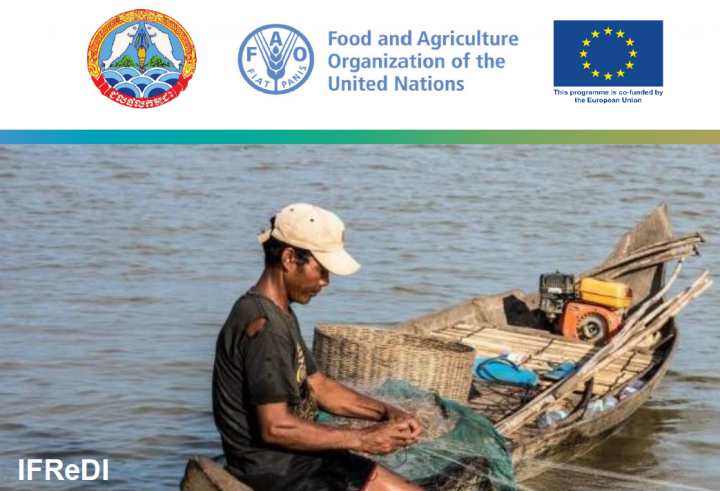
Fisheries are a major activity for many people living in inland and coastal areas and are considered to be the major source of protein for rural populations. For Cambodia only the large-scale Dai fisheries are currently covered by a scientific catch assessment survey. All other available statistics are based on a routine reporting system, that utilises a monthly questionnaire sent out by the Department of Planning, Finance and International Cooperation (DPFIC) to cantonment offices. Despite small-scale fisheries contributing the bulk of the fish production these are not covered by any routine catch assessment, except for localised limited scope scientific surveys that can’t be used for the estimation of total catch and effort. All current statistics are based on reported catch by lower administrative levels, collated by cantonment and for national level. The reported data ultimately is obtained from reports by commune level, based on key informants, field observations and records kept by local government authorities. IFReDI, with technical assistance from FAO CAPFISH project under EU budget support, is currently implementing scientific catch assessment survey (CAS), using monthly household recall interviews. The aim is to obtain better information on catch and effort by small-scale fishing household in Cambodia, and to develop a sustainable catch monitoring methodology for implementation by provincial fisheries administrations, supported by IFReDI. Catch assessment for inland fisheries uses a recall methodology where respondents are interviewed about the fishing household catch and effort. This allows to collect a sufficiently high sample without the high cost associated with incentives for participants in a logbook survey. Data collected is primarily for species level catch assessment, but will also allow to calculate effort, disposal (what the catch is used for, trade, fresh consumption, processing and other use), value of trade and involvement. The main target is to produce estimates that can be used to evaluate and supplement estimates currently produced by province level reporting-based catch assessment. Scientific catch assessment uses two main surveys to collect all necessary data for estimating fisheries indicators and allow for calculation of overall catch for inland fisheries and at fishery area and province levels. A Household Selection Interview (HSI) to randomly select participating households and collect data on the fisheries dependence of each household (while also evaluating proportion of fishing households) and the Household Catch Interview (HCI), that collects data on species catch, effort, involvement by gender and disposal of the catch (including value). All data is collected digitally using survey forms developed in Kobo Toolbox. In order to facilitate access to the data and preparation of reports by fisheries staff, all available data collected in the surveys is included in an on-line database. Limited public access to the data is provided, while all published monthly and annual reports can be downloaded in Khmer and English.
